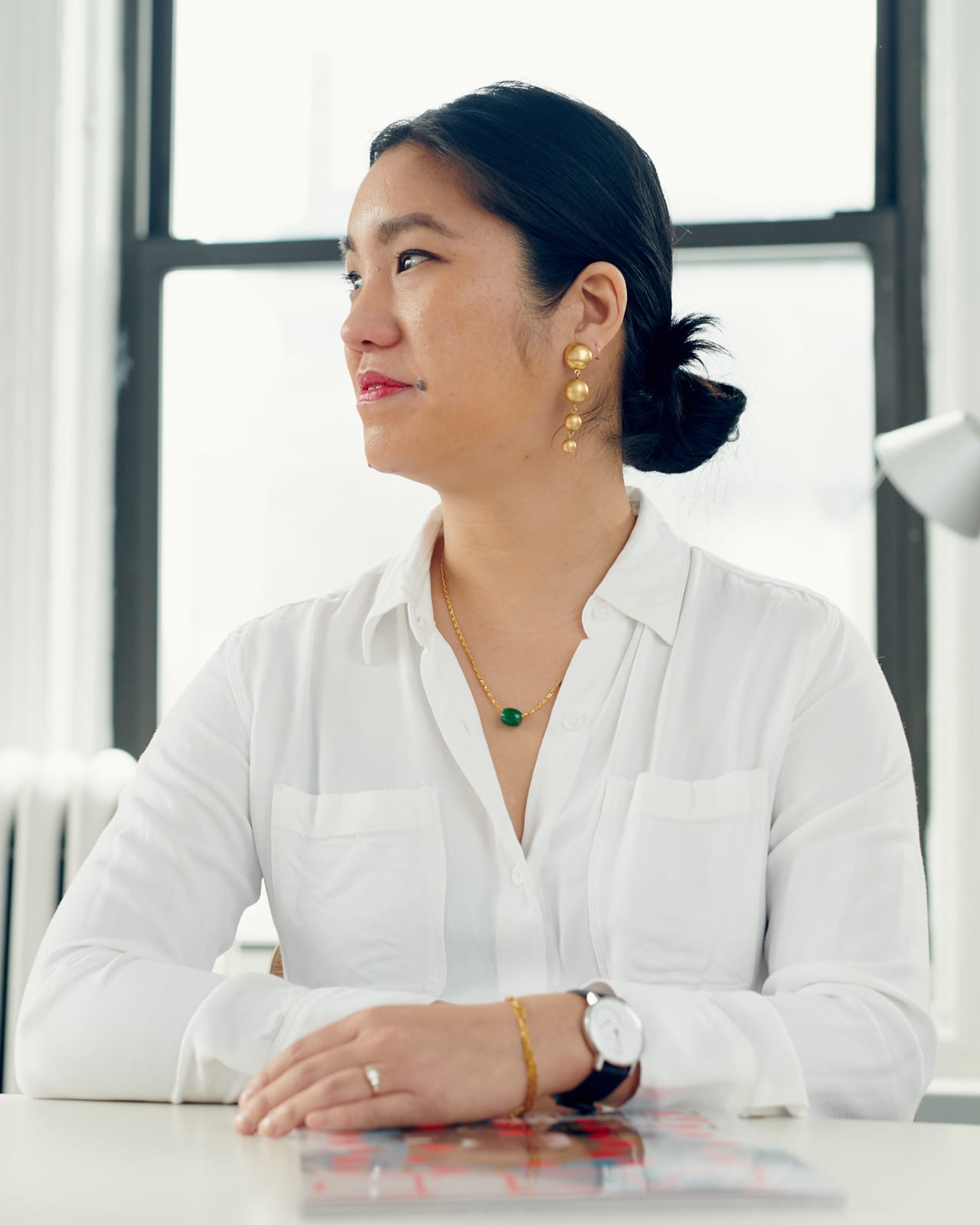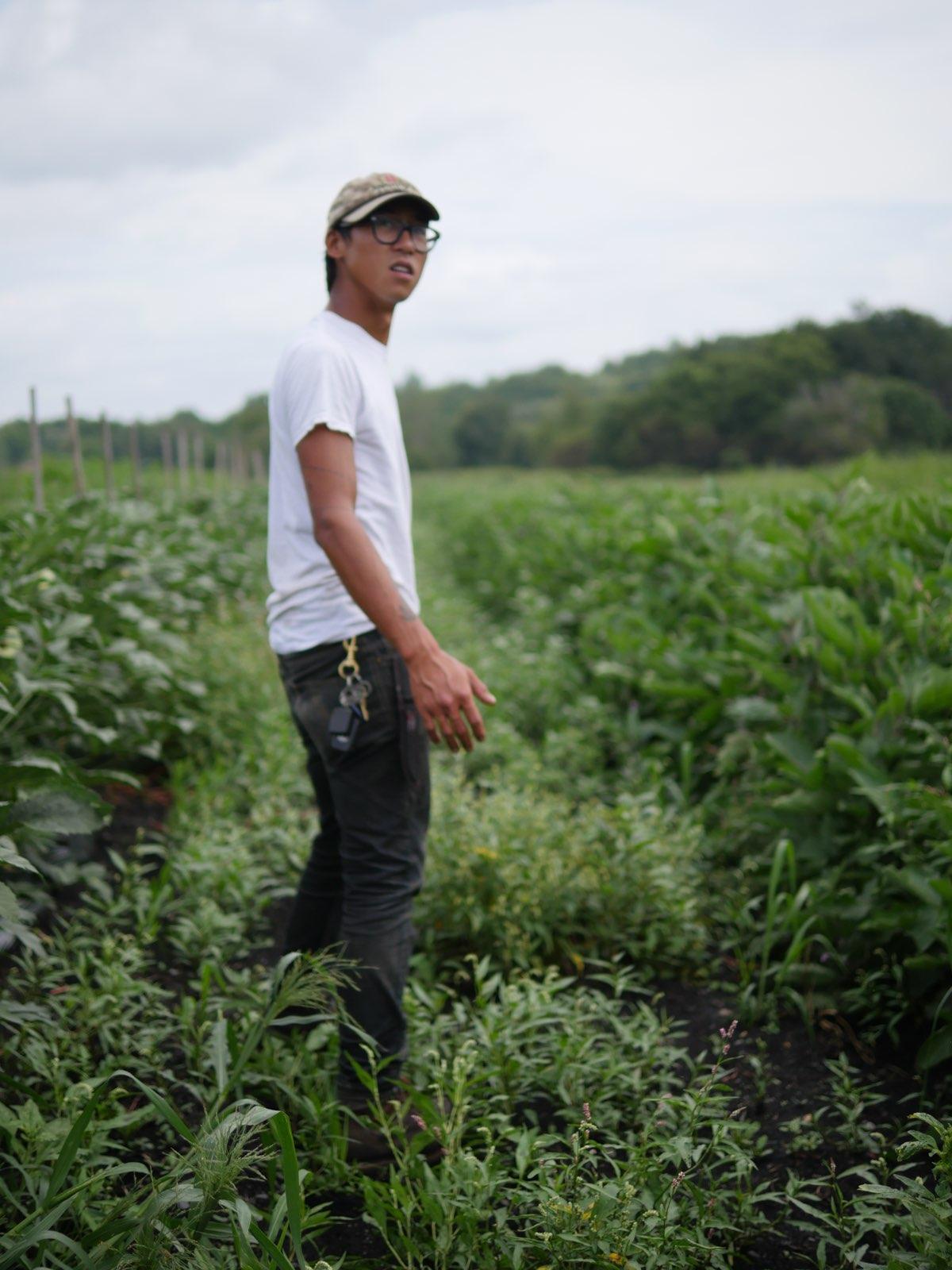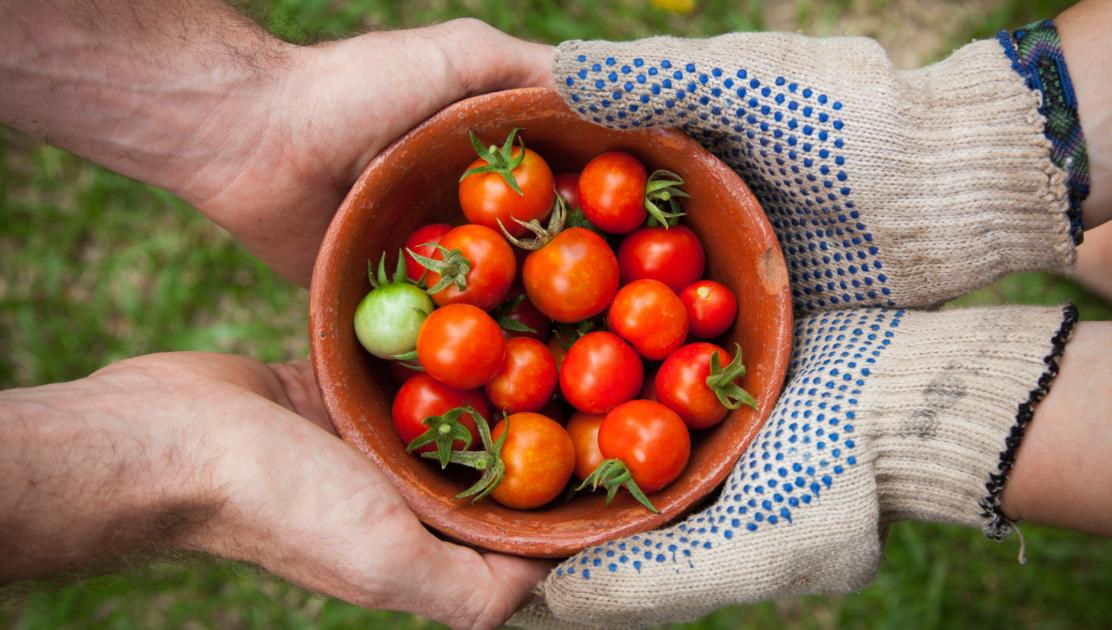New Ways of Connecting with Food, Farm, and Farmer
By Tom AndersenOn the Pathways Toward Planetary Health – the interconnected road to ecological civilization, Half-Earth, regenerative economics, and pervasive altruism – there must be awareness and a bedrock of underlying values. There must be an ethical framework and a capacity to generate solutions. There must be a basic morality.
But there also must be something good to eat. And plenty of it. Food systems are invaluable.
It’s a big topic. We turned to design journalist LinYee Yuan and farmer Larry Tse, a Gen-Xer and a millennial who are wholly invested in long-term solutions to food sustainability and adaptations to climate change.
They participated in a panel discussion about design and food systems, and food sustainability at the recent Likeminds Camp design conference in Fishkill, NY. Their expertise was impressive, and their ideas and values wholly consistent with those discussed at the Garrison Institute’s Pathways Toward Planetary Health symposium in April.
LinYee, a graduate of Columbia University, is a design journalist who used a successful Kickstarter campaign in 2017 to transform ThisisMold.com from a website to MOLD, a twice-a-year print magazine “for the ideas that will revolutionize how we produce, prepare, and eat food in the years to come.”
Larry graduated from George Washington University. He has managed organic farms in the Philadelphia and New York areas and now oversees the Dig Inn restaurant group’s organic farm in Chester, NY, in the famed Black Dirt region of Orange County.
Tom Andersen spoke to them recently. They began with the connection between food systems and design.

LinYee Yuan, the editor of Mold Magazine.
LinYee Yuan: Designers are really critical. Basically, designers are professionals who have a very specific training that helps them deliver products and services and systems that take a human-centered approach. They’re trained to frame the right questions. Unlike engineers who are kind of trained for efficiencies, designers are really thinking about how do we live with these things in our everyday lives, and also how do we communicate complex systems like the food system so that consumers and everyday people have more control over what and how they eat.
Larry Tse: That’s something I’ve thought about for a long time – that what needs to be addressed in the food system is not necessarily how we grow things. It is an important part, but it does require a cultural shift in the mindsets of the American consumer, of people in the world on how to eat and how they look at food.
A great example is that for a long time when I was in school, I guess it was eight years ago at this point, a lot of thinking in food justice was, we have food deserts, so if we just put farmers’ markets there, or if we put these grocery stores here, the problem will be solved. We’ll solve food insecurity. We’ll solve people not eating well. We’ll solve nutrition.
We tried that. A plethora of farmers’ markets popped up, but the issue did not go away. The food insecurity did not go away. Nutrition did not necessarily change. It’s because what we came to realize was that just because you have the system there—people don’t understand how to utilize it. And there needs to be people who can explain to others, “This is how you eat well, or this is why you should eat green food instead of white food.” It’s not just that we have to grow food the right way, it’s that we have to get people to understand an appropriate way to consume food. And that is not necessarily the farmer’s job. That’s like LinYee’s job. It’s the job of the designer and the storyteller. We can try our best, but it’s not our forte, right?
LinYee Yuan: There is a real responsibility amongst educators and people who are working—whether you’re buying for the grocery store or you’re creating the tools for consuming those foods or you’re a chef—to also really educate people about the importance of the diversity of flavors, around seasonality, around what is actually being sold in those grocery stores. That’s a behavioral shift. The fact that our expectation is that we have oranges year round and that they taste exactly the same every single month is completely egregious actually.

Larry Tse at the Dig Inn restaurant group’s organic farm in Chester, NY.
Larry Tse: We can produce food, and that is not necessarily a hard thing to do, but in a lot of people’s minds, going to a farmers’ market is difficult. It only happens once a week or at specific times. So how do we make that food more accessible to other people who might not have that time to go to a farmers’ market? How do we create a food system that can move produce from the farm to someone’s home more efficiently? With these systems, if they make it easier for us, then we have more time to do what we do best, which is think about how our work affects the environment, how to use less water, or implement a more sustainable agricultural and food system.
Tom Andersen: Those sound to me like the issues that we need to deal with. What are the answers to those issues? Obviously, better design, but can you talk specifically about what’s being done to improve things in that area?
Larry Tse: Eating local food and participating in this local economy is a hip and it’s a trendy thing to do. People want to do it, and so the Internet has just been a game-changer for a lot of farmers. We can sell food without having to leave the farm. There are companies now that—and you can take issue with the model or whatever, but—someone like Blue Apron has expanded the reach for a lot of local farmers because their focus is to support local farmers.
It’s made the products that come from the farm very accessible. For us farmers, Blue Apron will pick it up and handle that distribution, and that’s something that we don’t have to do. That’s another market. The internet and app space has created more opportunities for a lot of farmers to get their product out.
LinYee Yuan: I’ll actually give another option that’s not full of plastic and waste, which is a super old school model, but one that I participate in – the CSA, or Community Supported Agriculture. It’s something that I think really brings people closer to their food systems, and actually connects you with a specific farmer. Every week you meet somebody who works for a specific farm, and you know where that produce is coming from. You help them not only sell what they produce in that season, but you’re actually supporting the next season’s work as well because you’re guaranteeing a base income for the working farm to plan, to experiment with things, knowing that if they are successful at doing that, there’s already a set audience for that food.
That to me is also something just filled with joy because I am part of a Community Supported Agriculture group here in Crown Heights, and not only do now I know a farm and a farmer, but I also know my neighbors better.
Larry Tse: I’ve always thought that for new farms CSA has always been the best way to begin, because you get that monetary buy-in, what is essentially a loan through the season. Then you also create a hub at your farm for people to come to that raises awareness of the farm, and then again, just build the community there that people are interested in coming back to again and again.
Tom Andersen: Larry, how does your farm fit in with the beginnings of a regenerative economy in the New York City area?
Larry Tse: Well, Chester is an interesting place. A lot of this part of Orange County is still a fairly depressed area. Your three cities here—Port Jervis, Middletown, and Newburgh—are still fairly low income. Our farm is located just outside the village, which is a single main street town. It has a deli. It has a real estate business. But it’s very small. There is a heritage of farming in Chester, and in Orange County, built around the Black Dirt, because it’s such a unique place, and it has such a long history of farming.
We see these towns that are struggling economically, and we think how can we bring it back and create a hub for the area? That’s what we would like to see—and it is something that the people who we lease land from, the Chester Agricultural Center, is trying to build. To be honest, it’s very hard for us right now, and we’re still looking for that answer. Agritourism is really big in our industry. We know that people are looking for an experience. People are looking for a destination.
LinYee Yuan: There’s a dairy farm called Churchtown Dairy upstate. One of the things that’s really powerful is that they’re upfront about talking about this dairy farm as a regenerative community farm. What that means is that they hire locally to manage and run this dairy farm. They are prototyping new models of dairy farming that can actually be regenerative to the land. And it’s also regenerative for the community because they’re involving people in the community not only in the actual production and upkeep of the space but with programming. They’re really trying to build a community hub at the site of the farm. Because like you mentioned, the unit of regenerative economy is not necessarily a business, but it’s actually a geography. I think that this kind of ecological perspective on economies is actually really important as we move forward.
Larry Tse: The past two years here have been very difficult years for farming. I’ve noticed that a lot of these operations have downsized or are really struggling to keep afloat, and so what I was wondering about is what are other markets that are available so that farmers are not living hand-to-mouth. Even though they are producing all of this food for the community, they can’t afford to feed themselves. So I’m super interested in what are the new markets that are available given our proximity to the city, so that a lot of us don’t have to do three farmers’ markets in New York City or constantly make wholesale deliveries. What are the other avenues that are available to us?
LinYee Yuan: In some ways it’s about how do we pay farmers more for the food. How do we actually design a certain sort of value system around our food? A lot of the food that’s actually very bad for us is subsidized, so how do we create a bigger conversation about supporting farmers?
Larry Tse: I think there are only so many avenues that farmers can sell their food to, right? There’s wholesales, there’s direct—like face-to-face consumer marketing—and then a CSA. But within those avenues how do we create a different food system to bring our food to the consumer or to the end user? I think that’s where the designers can fit in. They can create a new food system where we can sell something.
There is something that a lot of farmers have begun using called farm-to-table, where people put in their orders over the internet. They see what the farms stock online and that they can buy directly. We bar-code it. They pick it up. They send it out. That’s a really powerful, new marketing avenue for us that none of us would have been able to design ourselves. That’s someone else’s field. It takes designers, coders, and people with these other ideas on how to create something new that we can move our products from.
Tom Andersen: The other people we’ve interviewed are older than you and some have cited young people as a reason for optimism. Do you have as much faith in your generation as the people of my generation either have or want to have in you?
Larry Tse: I’m always optimistic. I see a lot of young people who are interested in creating a better food system, who may not want to be farmers, but they are interested in the industry itself. I see it with my team who I think at the beginning of it I didn’t think that they’d be that interested in agriculture. Now, you know, we have three people who are interested in starting their own farm businesses. People see the challenges we face and that we are able to, as a community, overcome them, maybe in a micro sense. But it’s all the micro things that create macro change.
LinYee Yuan: Larry, thank God. I’m so happy to hear that. That makes me feel so much better. I’m an eternal optimist, and I agree with Larry, but I would also maybe complicate the answer a little bit. I think that there’s a real pessimism within our generation as well and we don’t necessarily have a choice but to change things for the better. Like we’re past the tipping point, you know what I mean?
I recently interviewed Karenna Gore who is the director of the Center for Earth Ethics, and her mission is really about engaging spiritual leaders in conversations around climate change.
What she said to me I think will forever change my perspective on the way I talk about the food system. I was like, why talk about climate change as moral issue? And she was like – well, because it fundamentally is one. It’s not about the science of it. It’s not about the economics about it. It’s about the fact that currently we live in a system that the paradigm is all about economic development, and nobody has ever asked at what cost.
And so now we’re at a place where there’s no other choice but to frame food system design as a moral issue. It’s like it’s about this is really wrong, like we are polluting the planet and ruining the planet for economic development gains. And now it’s time for us to kind of band together and put forth a new paradigm for us all to be actively working to repair the damage that we’ve done thus far.
Tom Andersen, author of This Fine Piece of Water: An Environmental History of Long Island Sound, conducted the interview.
Photo by Elaine Casap on Unsplash
